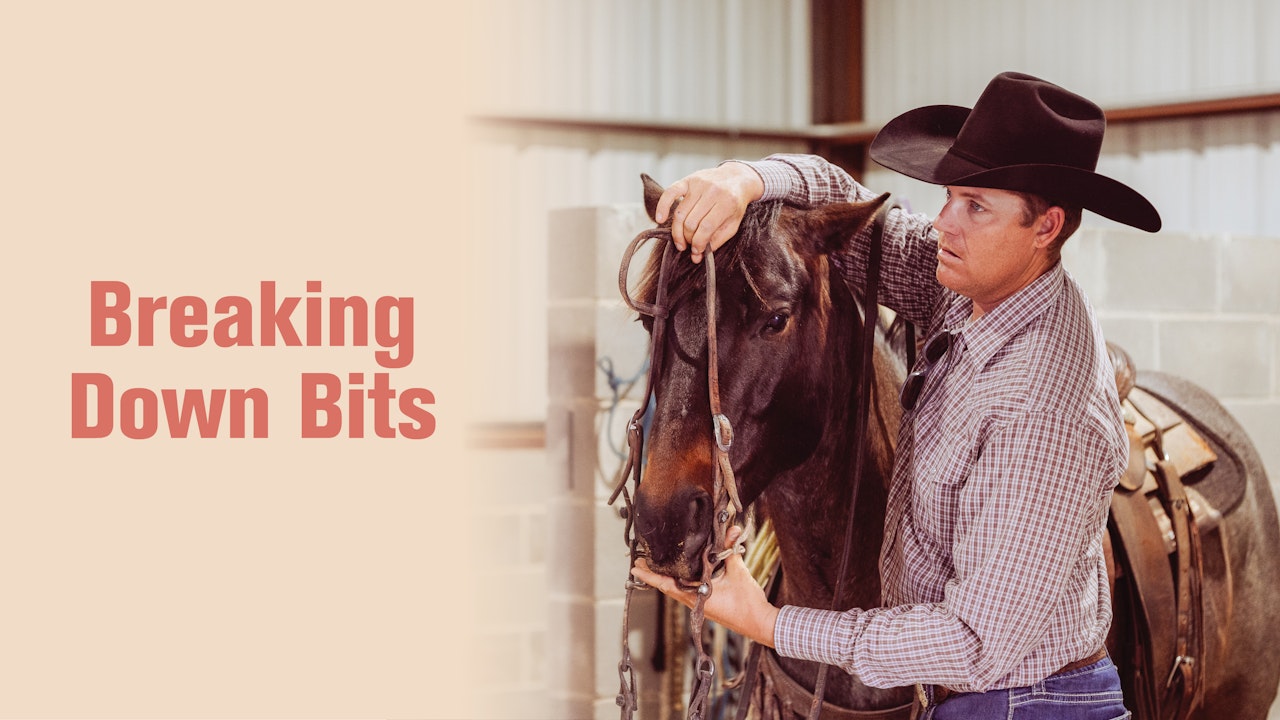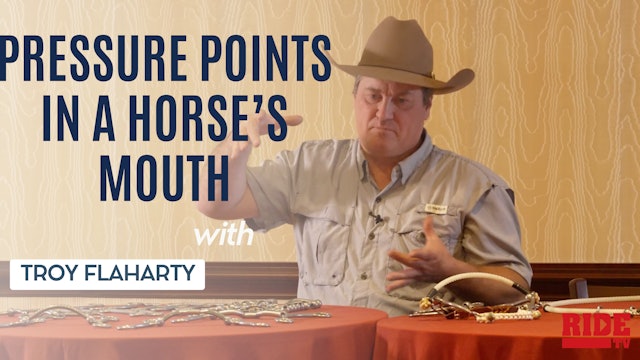Breaking Down Bits
The "Breaking Down Bits" video series provides an in-depth exploration of the various types of bits used in horse training and riding, demystifying their functions and applications. Led by knowledgeable experts, this series explains the mechanics, uses, and effects of different bits on horse communication and control. Each video offers detailed insights into selecting the appropriate bit for specific training needs, understanding bit pressure points, and ensuring proper fit for the horse's comfort and performance. Whether you are a novice rider or an experienced equestrian, "Breaking Down Bits" equips you with essential knowledge to make informed decisions about bit selection, enhancing your overall horsemanship and improving the horse-rider partnership.
-
Thoughts on Mechanical Hackamores
Justin Briggs shares his thoughts on how riders should adjust when using a mechanical hackamore and how this tool is designed to function.
-
Snaffle Preference
Justin Briggs talks about the style of snaffle bits that have produced the best results for his program.
-
ColtStarting Series:First 30Day Bit Progression
Bonus video from Roping.com.
-
The Importance of Bit Guards
Sharin Hall uses bit guards and explains why this is an important detail you shouldn't overlook.
-
Training Bits vs. Running Bits and Why?
Leading barrel horse trainer Sharin Hall answers the common question of if she trains and runs in the same bit, and if so when and why this would apply.
-
Colt Bits & Competition Bits
Leading barrel horse trainer Sharin Hall discusses her exclusive bit designs and how each one works at various stages in her program, from riding colts all the way through to highlevel competition.
-
Respecting the Bridle
Troy explains the importance of teaching your horse to respect the bridle. This plays a key role in bit selection for your horse.
-
Light Hands, Heavy Bridle
Troy Flaharty explains why a heavy bridle and light hands or a light bridle and heavy hands are a good combination for achieving the desired reaction from your horse.
-
The Listening Bit
The listening bit is a good tool for a horse that needs a quick correction. Troy explains why the bit is useful, but isn't for every horse or rider.
-
Starting a Horse in a DRing
Colt starters like a few different bits to start young horses in. Learn about why Troy likes to use a Dring when starting young horses and how it helps to teach them essential skills for barrel racing.
-
Bit Progression
Bit progression depends on the horse, but knowing which bits make good next steps is something all riders should know. Troy breaks down bit progression for what he likes and his regular clients like.
-
Feel of Mouth Pieces
If you've ever wondered the difference in a smooth or square twist would feel like in a horse's mouth, Troy explains it here.
-
Combo Bits
Combination bits have been a mystery to many in the barrel racing industry. Troy explains how his combination bits function and what type of horse may benefit from using one.
-
Hackamores
Hackamores are like many other bits, being that only certain horses will be successful using one. Troy explains how his hackamore varies from others on the market.
-
What Bit Do I Need?
Have a horse that's shouldering barrels or not being fluid in his turns? Picking a bit that will help a specific problem with a specific horse isn't easy. Troy explains why it's up to the rider with help from the bit maker to see what bit may help the situation.
-
Picking a Bit for You and Your Horse
Selecting a bit for you and your horse can seem like a daunting task. With an endless combination of cheek and mouth pieces, how do you know what will work? Troy helps you to simplify this process.
-
Be a Good Horseman: Understanding Bits
There are many details that go into being a good horseman. Understanding bits helps you to become a better horseman, so that you can best communicate with your horse.
-
Determining if Your Horse will Accept a Ported Bit
Ported bits are rarely seen in the barrel pen, but could be one of the best tools in your toolbox. Troy explains how to determine if your horse will accept a ported bit if you choose to use one.
-
Functionality of Barrel Racing Bits: Mouth Pieces
Selecting a mouth piece can be one of the more challenging aspects of selecting a bit for your horse. Troy Flaharty breaks down the different types of mouth pieces he makes and how they can be used with various cheek pieces to create the feel you're looking for.
-
Sliding Gag
Sliding gags are common in barrel racing. Learn more about sliding gags and how one could be beneficial for your horse—young or seasoned.
-
The Banana Bit
The banana bit is one of Troy's mostbought bits. Learn about why barrel racers love the bit and how you could utilize the bit in your lineup.
-
Bit Placement in Your Horse’s Mouth
Adjusting the bit in your horse's mouth plays a key role in how the bit will function. Troy explains how he likes to see his bits placed in horse's mouths and the reasoning behind it.
-
Pressure Points in a Horse’s Mouth
You will be utilizing various pressure points in your horse's mouth depending on the type of bit you use and how it's adjusted. Listen as Troy explains the pressure points and how bits are made to communicate using them.
-
Chin Straps for Communication
Bit functionality is important, but understanding how to use tools like chin straps will help you to better use the bit you've selected. Chain chin straps are common in barrel racing, but are they what you should be using?


























